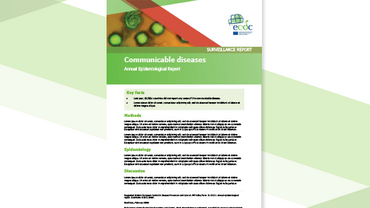Tuberculosis surveillance and monitoring in Europe 2012
This is the fourth surveillance report launched jointly by the European Centre for Disease Prevention and Control (ECDC) and the WHO Regional Office for Europe (WHO/Europe) following on from reports under the EuroTB project, established in 1996.
The full report is available in English. A summary is available in all EU languages, Icelandic and Norwegian
Executive Summary
In 2010, the EU/EEA countries reported nearly 74 000 tuberculosis cases – around 7% less than 2009. While the notifications for multidrug- and extensively drug-resistant tuberculosis (M/XDR TB) have been stable over the past 5 years, the proportion of extensively drug-resistant patients among this group rose from 8.2% in 2009 to 13.2% in 2010 in the EU/EEA, possibly due to increased reporting. These rising numbers pose a serious threat in the attempt to eliminate TB, highlighting the importance of early detection and adequate treatment of tuberculosis patients in the region.
ECDC Director Marc Sprenger, stresses that “Countries with low incidence of TB – which means less than 20 patients per 100 000 population – face a particular challenge in taking the final step towards elimination of the disease as TB often concentrates in big cities. In this setting, key populations like people who inject drugs, homeless people and migrants are disproportionally affected by TB. That is why we have to exchange best practices from across Europe: if TB services are not tailored towards the needs of urban risk groups there is a continuing risk of higher rates of TB in general and drug-resistant TB in particular.”






